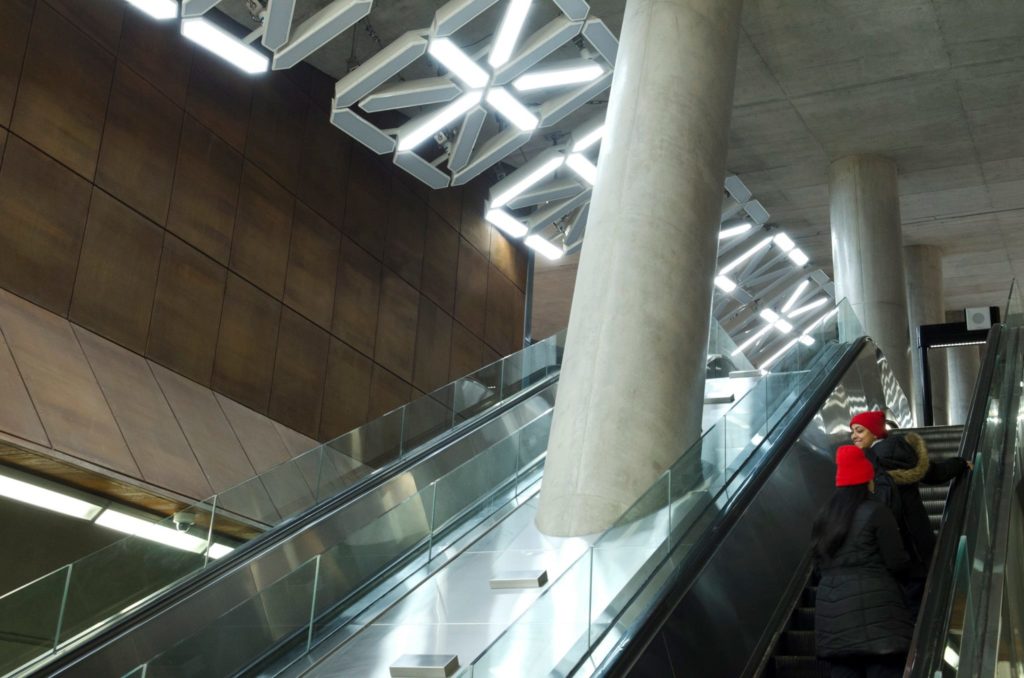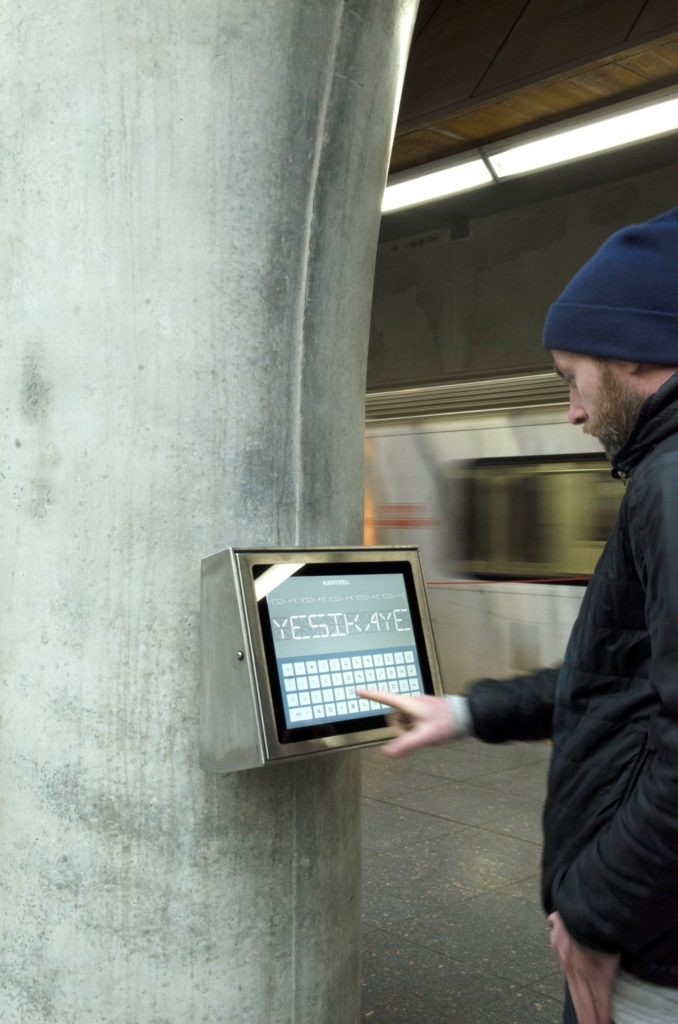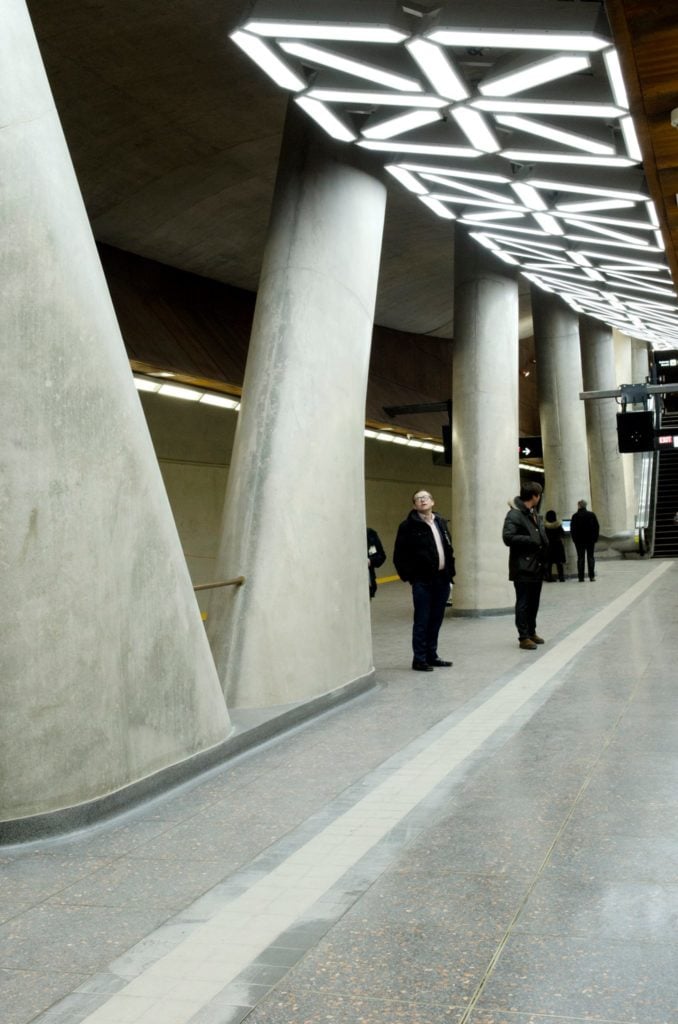Art World
Toronto Halts Interactive Public Art Installation, Fearing It Could Incite Hate Speech
The work invites the public to type any word into a keypad and see it appear on large-scale displays.

The work invites the public to type any word into a keypad and see it appear on large-scale displays.

Henri Neuendorf

A public art installation in a Toronto underground rail station has been halted before it even launched after transit authorities raised fears that it could be used to transmit hate speech and profanity.
The Berlin-based design studio realities:united installed a control terminal in the station and planned to invite commuters to enter up to eight characters on the keyboard that would then appear on large displays hanging from the ceiling.
But Toronto Transit Commission (TTC) officials worry that some users could abuse the work, titled LightSpell, and type offensive messages. “This isn’t about limiting free speech, but making sure people feel safe on the TTC,” transit spokesman Brad Ross told CTV News. “If somebody looks up and sees a racial slur that they think may be targeted at them, then we have failed them.”

Photo courtesy of realities:united.
To prevent the misuse of the installation, authorities proposed both a blacklist of offensive words and phrases, and a white list of pre-approved words that users could choose from. The collective rejected this idea, telling CBC radio that it would be an “ironic distortion” of the work’s intent to explore freedom of expression and the collective consciousness.The transit authority’s suggestion “sounds more like North Korea than like Canada,” said realities:united co-founder Tim Edler.

Photo courtesy of realities:united.
For the time being, the installation, which cost $399,000, remains switched off while the TTC negotiates with its creators. Meanwhile at least some of the artist’s goals are being fulfilled: “I am thankful to have this discussion via the media, whether it’s wrong or right, so in some way the piece is working on a different level,” Edler said. “Although I would prefer to have the piece working on site.”
The transit spokesman told CTV News that the debate over the installation’s potential to offend came to light only days before the station’s opening because officials were focused on completing rail infrastructure. “To be frank, the art was not on anybody’s radar in any way shape or form and it wasn’t until quite literally the last days before opening it was discovered that you could type anything in,” he said.